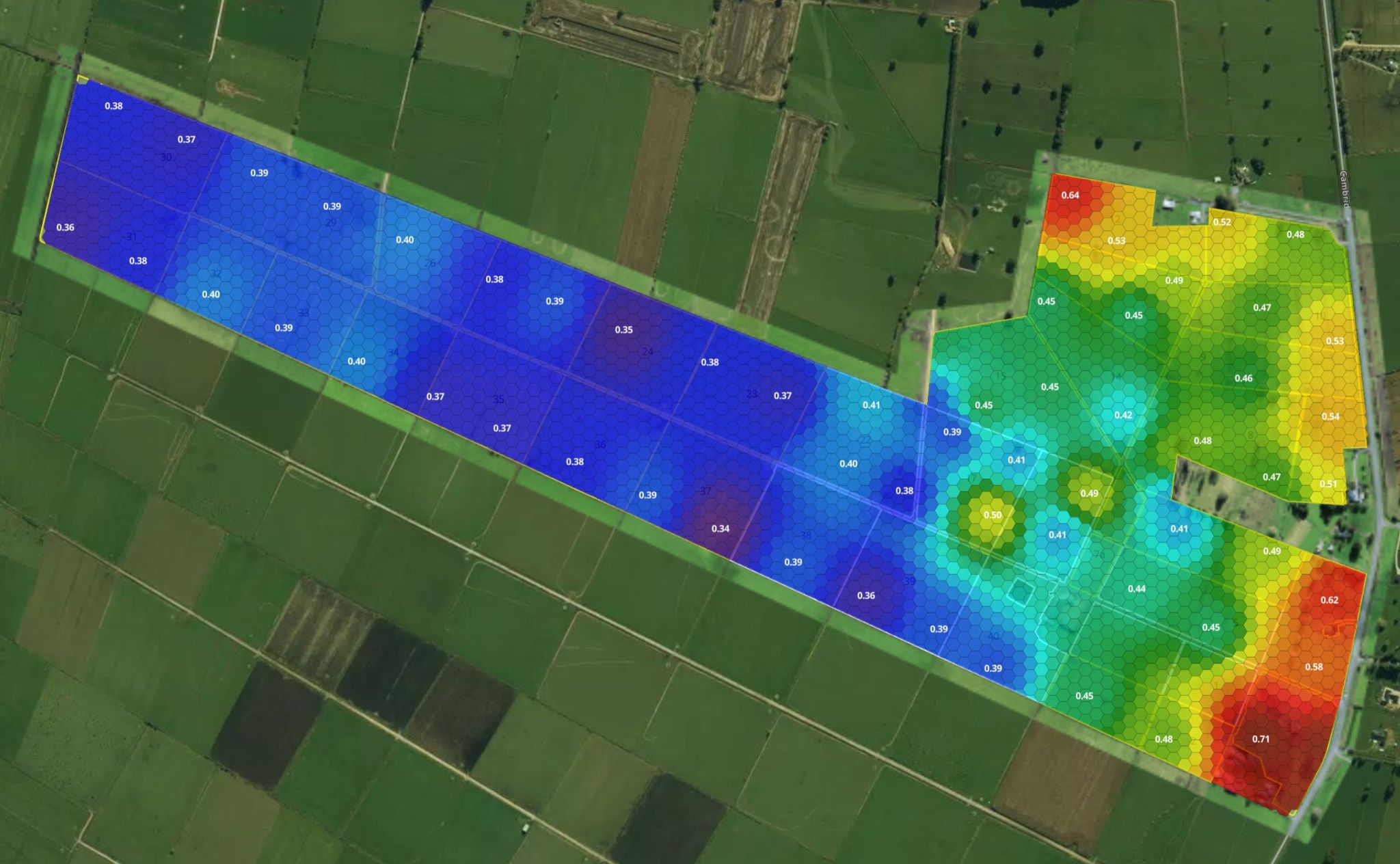Is it time to re-evaluate our Phosphate management strategy on peat soils in New Zealand?
The graphs below have been taken out of the green booklet: “Fertiliser use on New Zealand Dairy Farms”, that is published and distributed by Fertiliser Association of New Zealand. These books are extensively used in the industry to produce fertiliser recommendations on dairy farms across the country. This include the estimated 94 000 hectares of peatland in the Waikato region, of which most has been developed into dairy farms. (Waikato Regional Council)
At Revive Soil Solutions NZ we recently did soil tests for one of our customers on his farm near Cambridge.
The two highly correlated heatmaps are firstly of the bulk density of the soil on a 2 ha grid with the blue colour illustrating the lower bulk density (peat) area of the farm and the green, yellow and red colours showing the higher bulk density (ash) soil. The other heatmap shows the Olsen P levels after the farmer has tried for 15 years to build his Olsen P levels to within the optimum range. He was “very successful” on the ash soil (red area) with current Olsen P levels in excess of 100 mg/l, while he was “less successful” on his peat soil (blue area) with average Olsen P levels still below 20 mg/l. In his own words: ” I used to put a ton of super per hectare on the back of the farm many times to try and fix it”
These results puzzled us and led us to do extensive research and we came across the following in “The Efficient Use of Phosphorus in Agricultural Soils”, published by The Fertilizer Association of Ireland in association with Teagasc.
“Phosphorous in high organic matter (Peaty) Soils”
“Organic matter rich soils, and peat soils (organic matter concentration >20%) have much lower capacity to retain P (due to lower mineral matter levels) (Wall & Plunkett, 2016).
Conventional P fertiliser strategies cannot be applied to these soils and a different approach to fertiliser needs to be implemented.
The appropriate P fertiliser strategy for high organic matter soils (peat soils) is to apply maintenance P fertiliser rates that appropriately match the crop P demand over the growing season. Single, large one-off applications of P are not recommended for these soils.
Fertiliser P should be applied close to the onset of spring growth when soil moisture and temperature conditions are favourable to kick-start growth. Phosphorus should be applied using a “little and often approach” thereafter.
It is not advised to apply fertilisers for P build-up on peat soils as this extra P cannot be stored by the soil. Surplus P, in excess of crop requirements, is therefore more likely to be lost during periods of high rainfall and when water begins to drain from these high organic matter soils. This can result in an increased risk of surface- and ground-water body pollution from these soils.”
Based on the evidence, it seems the Irish has a bit more than “luck”, they might actually have a point.
Phosphate management

